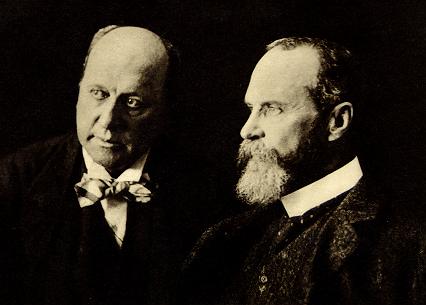"What are Payrolls Telling Us About the Equity Market?
BY BRIAN PRETTI | may 22, 2009
I don’t know about you, but I’m getting pretty tired of the now incredibly overworked term “green shoots.” Oh well, every economic transition has to have a media tag line, right? It’s been quite a while since I’ve had a little roll through historical payroll numbers. Since April’s payroll numbers were a supposed “green shoot,” now’s the time, okay? To be honest, it’s not the payroll numbers and trends that’s the key issue per se, although it is very important to stay abreast of the factual data circumstances in which we find ourselves as opposed to unquestioningly slurping down the media tag line version of the facts. The much bigger issue of importance is trying to corroborate real economic activity to trends in the financial markets, specifically equities since they are the poster child locus of the perceptual green shoot garden. And from there we can importantly try to infer just what is driving financial asset prices – reality, the anticipation of a truly realistic reality yet to play out that the markets are indeed correctly discounting, or the perception of a reality to come that will ultimately turn out to be incorrect. That’s the key as I see it. So let’s get to the quick review of the numbers and trends, put the “green shoots” media sound bites into a realistic appraisal, and try to make some judgments about what is driving financial market prices of the moment.
The first little combo chart is a look at the year over year change in US payroll employment alongside the year over year change in consumer credit outstanding, the most recent numbers having been revealed a few weeks back. Let’s kill two birds with one stone here. First the year over year change in US payrolls has now hit a downside level not seen in 51 years. Our labor market experience is now officially worse in the current cycle than was the case in the 1974 and early 1980’s deep recessions. A year or two back, a monthly loss of 539,000 jobs would have seemed a national emergency, of course now it’s a green shoot. It all depends on how you see the light through the multiple colors projected by the prism, correct?

Certainly the bottom clip of the above chart shows us that as the year over year change in payrolls has ventured further and further south, consumer credit trends have shown record monthly contraction. Point being? Payrolls sure appear to now be a leading indicator for household deleveraging. We know the common wisdom is that payrolls are a lagging indicator in classical economic bottoming experiences. But is it different this time? In no other period in the chart above was consumer credit contracting while the annual rate of change in payroll employment was bottoming. In contemplating the perhaps secular difference in our current circumstances relative to what the investment community has come to accept as “common wisdom” as per the experience of prior economic cycles in the post war period, the relationship above makes us sit up and take notice. Payroll trends are leading a household deleveraging cycle. Remember, if you get the consumer right, you get the economy right and by definition the financial markets.
It’s a good bet labor market conditions get “less bad” ahead, perhaps absent the near term influence of auto company related employment trauma in the forward months. It’s a decent bet the worst of nominal monthly payroll declines for this down cycle is behind us. But let’s be realistic. We have a lot as an economy to make up for in terms of job growth in the current decade. Since December 31, 1999, total payroll expansion in the US through April of this year is a gain of 1.2%. In no other decade of the last six was payroll growth less than 20%. Our current experience in the first decade of the new century has been an historical anomaly. Forget green shoots. Talk about an undershoot of historical proportions, this takes the cake. So as the markets attempt to discount a return to better times, the fact is that for this entire decade "better times" have never even gotten started in terms of macro job growth. As I've tried to document time and again, credit expansion was the plug factor that allowed US households to maintain their self appointed life styles for a time set against the reality of vacant job growth. So these are the "normal times" we're attempting to get back to as per current financial market green shoot outlook?

In addition to what is happening with the relationship between the rate of change in payroll employment and the contraction in consumer credit, if the chart above does not speak to secular change in the most recent economic cycle, I just don’t know what does. Can investors as a collective group really be correct in currently trying to discount a “typical” US economic recovery ahead given the historically and stunningly atypical nature of the prior economic cycle in domestic payroll growth and it’s current unwinding?
Very quickly, here are the actual payroll growth numbers by decade stretching back seven decades to what is essentially the post Depression US economic experience. The whole idea of the possibility of secular change is quantitatively clear, no?
Period | % Increase In Payroll Employment By Decade |
| |
1940’s | 38.0% |
1950’s | 24.5 |
1960’s | 31.5 |
1970’s | 27.2 |
1980’s | 20.0 |
1990’s | 19.9 |
2000 To Date | 1.2 |
As promised, on to issues important to the actual longer-term forward trajectory of equities. As a very quick warm up, I’ve told you in the past that temp employment is a leading indicator for headline payroll employment. Likewise retail employment has been an important coincident indicator for macro payroll employment trends. Not surprisingly, as of the moment we’ve seen no turn upward in either temp or retail sales employment on a rate of change basis. To the point, real world economic anecdotes that are temp employment and retail employment trends have correlated quite positively with equity market movement over time. The following chart chronicles the year over year change in temporary employment on top of the actual price movement in the S&P 500 since 1990. Point blank, as a rule the year over year change in temp payrolls being in positive territory has coincided with the bulk of bull market equity gains over the last two decades. Not too hard to understand as trends in the real economy are shadowed in the equity markets. A simple way of correlating real world economic trends with the rhythm and pacing of equity prices? It looks that way as per the following chart.

Employers who sense a change in economic trend first test the waters of business expansion by hiring temps. This is the initial sign from the front lines of the economy that an economic recovery is at hand. The chart above bears this out in spades. If one had used this very simple relationship as a buy or sell indicator for equities since 1990, one would have done quite well. Message of the moment? We’re looking at the worst year over year rate of change experience for temp employment in what is admittedly the very short history of this data. It’s telling us employers aren’t even ready to take a bet on easy to relinquish temp employees in terms of business expansion. If indeed equity markets are correct about an imminent turn in the prospects of the US macro economy and temp employment trends specifically, then temp demand seems destined to literally skyrocket in the months ahead. Either that, or something other than expectations of fundamental economic outcomes is driving equity prices in the past few months.
Retail employment trends are also helpful in trying to identify and corroborate important turns in retail sector equities. As you know, many a retail stock has zoomed higher in the recent rally after being bludgeoned in the prior year and one half. Yet the year over year change in retail employment rests at an all time low for the short history of the data as of the recent monthly numbers. Moreover, as of recent data, the year over year change in retail sales is likewise a hair below the lowest level ever seen in historical data (dating back to 1948). Once again we’re looking at the year over year change numbers for retail employment below, but this time set against the history of the S&P retail index.

As I review the data, I believe the indicated buy point for retail equities is when retail employment lifts from a cycle low and crosses the –1% year over year rate of change barrier. Exactly as marked with the blue bars in the chart above. After losing over half their value from the highs, the retail stocks in aggregate have staged quite the rally in recent months. But before we can become believers that the upward trend in retail equities is sustainable and will be corroborated by the forward character of the real economy, we’re going to need to see retail employment turn up on a rate of change basis. We're not there yet, let alone witnessing an improvement anywhere even near -1% on a year over year rate of change basis.
As I contemplate the dynamics of the current cycle, history is whispering in the ears of investors that indeed payroll employment strength is a necessary prerequisite for real economic recovery. And by default, real economic recovery is the validation point for equity bear market rallies that ultimately morph into new cyclical bull market experiences. Although it’s far from the sole driver, the relationships above point to the fact that employment trends are important drivers of and corroborative points regarding equity direction at any point in time. At least so far, payroll trends are not showing us improvement. Moreover, we need to at least be open to the idea that in the current cycle where household deleveraging is a key and overriding theme, employment numbers are not a lagging indicator, but a meaningful leading indicator for a US economy quite dependent on consumption. Although I’ll save this for a future discussion, as of now the annual rate of change in US wage and salary growth is negative for the first time in five decades of historical numbers. In the absence of household credit reacceleration (the opposite of which is actually happening). I strongly suggest watching for signs of increased DEMAND for credit will be the key macro watch point ahead. Although it's just my perception, the consensus is focused too heavily on the potential supply of credit, per se. We think they are looking in the wrong direction. It's demand for credit at the household level, wage and salary trends, and overall employment trends that will tell the story of green shoots blossoming into flowers or returning to the Earth from whence they came. The implications for equities as a result of the eventual outcome of these factors is clear.
Brian PrettiContrary Investor"







































No comments:
Post a Comment